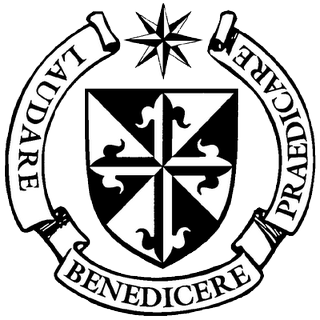
 Marian Devotion in relation to Lumen Gentium and Marialis Cultus

The lecturer, fr. Roland Mactal, introduced the Vatican II convoked in 1962 by Pope John XXIII, and closed by Pope Paul VI in the year 1965. Concerning Marian Devotion or Theology of Mary, he explains the two major themes “Aggiornamento†and “Ressourcementâ€. Aggiornamento means renewal or updating and Ressourcement means going back to the sources, here the sources will be the Scriptures.
Theology of Mary or Marian Devotion is mainly discussed in Vatican II Document Lumen Gentium, chapter eight. The lecturer explains the Parameters of Marian Theology. He introduces four parameters on the theology of Mary. Firstly, Mary as Theological Person which indicates Mary’s life and work as a mission expressed in Lumen Gentium, numbers 54 to 59.
Secondly, Mary as the Spiritual Subject, in which Mary is considered as one of us who experiences what we experience. In other words, that is the Process of Individuation. This concept is expressed in Lumen Gentium, numbers 66 to 67.
The third parameter is Concrete Universal in which Mary is presented as Model, Archetype or Exemplar of the Church. This typology reveals the relation between Mary and the Church. This parameter is taken from Lumen Gentium, numbers 60 to 65.
The last parameter presents Mary as Historical Subject. This parameter concerns the Anthropological and cultural identity of Mary, regarding the questions of who Mary is and where she is from. This parameter leads us to understand that Mary is an anawim, which means she is a poor of YHWH. This parameter can be found in Lumen Gentium, numbers 52 to 53.
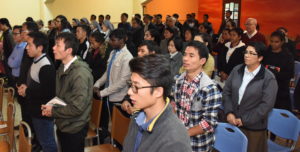
Another concept that the Lecturer discussed was Mary as Mediatrix. The Mediatrix is attributed to Mary only as a title. However, many people have been proposing it to become a dogma. He continues to explain that there are some opposite ideas on this issue. Some propose that Jesus Christ is the Only Mediator, quoting the Letter of St. Paul to Timothy 2:5-6.
The counterpart explanation of this is that the mediation of Jesus is unique and ontological and cannot be replaced. The mediation of Mary is intercessory and dynamic. Mary’s mediation is through intercession, because she participates in the life of Jesus Christ. It does not obscure or diminishes the unique mediation of Christ, rather shows His power. (L.G. # 60) Because of the superabundance of merits she received from Christ, she is the Mediatrix. Lumen Gentium, number 62 entitles Mary as “Advocate, Auxiliatrix, Benefactressâ€.
Concerning the Apostolic Exhortation Marialis Cultus of Pope Paul VI, the lecturer explains the role of Marian devotion in relation to the Liturgy. The Liturgy is the official public prayer of the Church. The Vatican II emphasizes to restore and enhance the Liturgy by active and fruitful participation of the faithful in it.
Marialis Cultus expresses in terms of renewal of private Marian devotion, such as the Rosary in relation to the Liturgy of the Eucharist and to the Liturgy of the Hours. Furthermore, in Marialis Cultus Marian teachings were the union of Mary with the mystery of Christ and the Church and the placement of Marian devotion in its right perspective.
Concerning Marian Devotion, Catholic veneration of the Mother of God has two aspects: Public (official) and Private (pious devotions and exercises). The Public Official Liturgical Prayers are the Holy Mass and the Liturgy of the Hours. Mary, the Mother of God, is commemorated in the daily celebration of the Eucharist. The Church has officially approved four solemnities, three feasts and nine memorials in honor of Mary within the Liturgical Year. Mary is featured in the liturgy in various ways such as Hymns, prayers and the readings.
As explained in Marialis Cultus, the Angelus and the Holy Rosary are the two exercises of piety, which are both biblically based. The substantial part of these devotions is primarily taken from the Gospel. The Angelus reminds us of the Paschal Mystery of Christ. The Holy Rosary which focusses on the salvific events of the life of Christ is called the Gospel prayer.
In Marialis Cultus, Pope Paul VI recognizes the Dominicans’ tradition on Holy Rosary as he mentions: “among these people special mention should be made of the sons of St. Dominic, by tradition the guardians and promoters of this very salutary practice, the praying of the Holy Rosary.†(43)
The lecturer concludes that “Marialis Cultus proposed Mary as model of the Church in divine worship, because she represents the Church at worship at its deepest level.â€
Francis Nge Nge, OP

Mr. Manel Machado during his presentation
Saint Paul School (Macau) was one among the main invited guests speakers at the Digital Macau Forum, organized by CTM, held on October 17, 2017 at the Macau University.  Â
                                                        
Mr. Manel Machado, Director of Academic Technology at Saint Paul School made his presentation on the theme “E-Education Development in Macauâ€. Everyone was beyond impressed by Mr. Manel’s presentation. His content was both factual and inspirational and could not have been more spot on, as to what our attendees needed to hear. Congratulations to Mr. Manel on his new and challenging views on e-learning, based on ‘Effective Integration’ and ‘Collaborative Learning’ and to Saint Paul School for being the leading school on e-learning in Asia.       Â
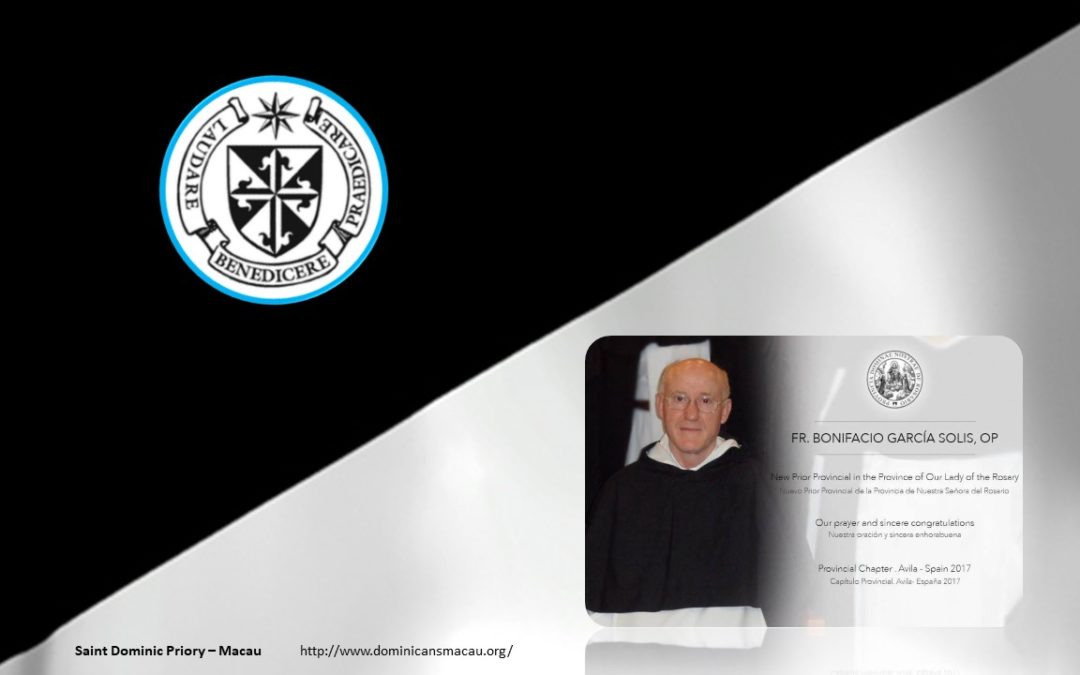
Feliz fiesta de Santo Domingo – Happy Feastday
Queridos hermanos – Dear Brothers:
Desde el CapÃtulo Provincial deseo enviar un saludo pequeño saludo a todos los hermanos de la Provincia deseándoles un feliz dÃa e invitándoles a hacer actualidad el deseo de Nuestro Padre de que todos fuéramos mensajeros de la Palabra y de la verdad.
From the Provincial Chapter I would like to send to all the Brothers in the Province this short greeting to wish you a very happy feast-day, and at the same time, I am hereby inviting you to become true messengers of the Truth as our Father wanted.
Que a ejemplo del Fundador seamos transformados por la fuerza del EspÃritu al contemplar y reflexionar sobre la verdad para que vivificados por el misterio que contemplamos seamos agentes dinámicos de predicación capaz de arrastrar, con el testimonio de una auténtica calidad de vida, servicio y dedicación a quienes el Señor nos envÃa. Si El nos ha llamado nunca será infiel a su promesa. Hagamos pues lo que podemos y confiemos y dejémosle guiar nuestros pasos.
Let the example of our Founder allow us to be transformed by the power of the Spirit as we contemplate and reflect on the truth so that strengthened by the mystery we contemplate we may become dynamic agents of preaching. This requires enthusiasm, quality of life, service and commitment in favor of those to whom we Lord is sending us. Since he called us, let us do our best and he will be faithful to his promise. Let us do what we can and allow him to lead us along the way.
No seamos agentes pasivos sino hombres de fe e instrumentos en las manos del Señor para enfrentarnos con valentÃa a los desafÃos planteados a la iglesia, a los creyentes y a nosotros, misioneros por vocación.
Let none of us become a passive agent, but men of faith and instruments in the hands of the Lord, that we may have the wisdom and power required to confront the challenges presented to the Church and the believers and to us, missionary by vocation.
Nada podrá hacerse sin la convicción de que la refundación de la Orden y la renovación exige constancia y dinamismo. No obstante, poco haremos si no permitimos al Señor encender en nosotros la llama del amor con que Él nos ama.
Nothing would be done without the conviction that the Order has to be revitalized and renewed through a constant and dynamic process, it cannot be halted. Nevertheless, we will achieve little unless we allow the Lord to set us on fire of that love He has for us.
Que Santo Domingo interceda por nosotros, dinamice nuestras comunidades y avive la llama de la esperanza. Domingo de Guzmán, tu que prometiste ser de más ayuda desde el cielo cumple hoy con tu intercesión lo que prometiste a tus hijos.
May St. Dominic intercede for us, revitalize our community and awaken the flame of hope. Dominic of Guzman, you who promised to be of greater help to your Brothers from heaven, fulfill your promise and come to the aid of your sons and daughters.
Feliz fiesta! – Happy Feastday!
Fray Bonifacio Solis OP
Prior Provincial

FAUSTO GOMEZ OP
faustogomez@yahoo.com
      Remember John, the patient with metastatic brain cancer? After discarding the option of euthanasia, which shortens life unethically, and of dysthanasia, which postpones death unduly, John has accepted orthothanasia or allowing to die, and signed a “living will.†He has also asked his elder brother physician to please continue taking care of his terrible pain, and to his daughter, not to leave him alone.
      Once in a medico-moral conference in Manila, I heard a psychiatrist say: “Ask not why a patient requests for euthanasia, but why life loses its meaning.â€Â Indeed, finding meaning to the end of life, and to suffering can make of euthanasia not an option.
      MEANING OF SUFFERING AND PAIN
      The word “suffering” is derived from the Latin word “sufferre” or” sub-ferre,” meaning to bear: the sufferer is a bearer of burdens. Although mainly physical in nature, pain is closely related to suffering, which is more than just bodily pain. As Eric Cassell says, pain is undergone by the body, while suffering by the person. Radically, however, the experience of pain and suffering belongs to the whole person, who is body-soul. Often, the terms pain and suffering are used interchangeably. Suffering may be physical and moral (cf. John Paul II, Salvifici Doloris).
      May suffering and pain be useful? Do they have a positive meaning? In the order of nature, pain and suffering especially severe and chronic are evils that attack our integrity as human beings, limit our freedom and independence, develop in many of us feelings of anger, rejection and guilt – and the fear of alienation.
      As an evil, suffering has to be avoided and fought. As an inevitable part of our earthly life – sooner or later, an intruder into our life –, we are asked to face it humanely, that is, reasonably, responsibly, and – as much as possible – courageously. In the order of divine grace, suffering is an evil, but it can become – when lovingly and patiently borne – an instrument of purification and salvation.
      Suffering, including physical pain, is truly mysterious: mysterium doloris. Suffering is part of the project of human life that is realized in love. God is not indifferent to our infirmities. In fact, in his Son Jesus Christ, he shared our sufferings, and is with us when we are in pain.  Out of love Christ died for all humanity. We, Jesus’ disciples, join our sufferings to the sufferings of Christ.  The deepest meaning of the mystery of suffering is co-redemptive suffering or suffering as an act of redeeming love (Col. 1:24). How do we bear our cross – our darkness? We try to bear it with courage, patience and hope – and prayer. How do we help others carry their cross, their pains and sufferings? By relieving their suffering and accompanying them with compassion and prayer.
      COMPASSION WITH THE DYING
      True compassion with the dying – with our brother John – is not the false compassion of euthanasia that kills, but the true compassion of charity as love of neighbor, of all neighbors, especially the poor and the sick neighbor – as Jesus witnessed and taught us.
      Following Christ, the Good Samaritan – the best paradigm of the healing and caring ministry –, we all have to be at the side of those who suffer in our families and communities, and to help them bear their sufferings. We have to accompany, in particular, the terminally and incurable ill. In his play Caligula, Albert Camus put these words in the mouth of Scipio: “Caligula often told me that the only mistake one makes in life is causing suffering to others.†We have to be at the side of the terminally ill in a nonjudgmental, non-paternalistic, but understanding, respectful and prayerful attitude.
      The terminally ill patients need not only pain relief, but also empathetic solidarity; need not philosophical or theological explanations but compassion. In general, health care professionals try to free patients from pain, while significant others – immediate family, friends, the pastoral team and also the healthcare team – provide support and protection, security – and “a warm heart.â€
      Another important point to underline: those serving the terminally ill, in particular believers in Jesus, realize that the sick evangelize them, too, by silently inviting them to reflect on the gifts of health and relationships, on God, on our own sufferings, on the finitude of life, and on their loving union with the Crucified and Risen Lord.
      How do we help others to die? We help them to die peacefully by praying with them and their families, by being with them, by accompanying them. While we ask the Lord to help us face our own death with courage, we ask him to help us face the death of our loved ones and our neighbors with compassion, with sympathetic solidarity. The Lord is particularly present in those who suffer. When we visit patients like John, we believe that Jesus is present in them. Jesus keeps telling us: “I was sick and you visited me†(Mt 25:36).
      THE REALITY OF DEATH
      Death is inescapable, inevitable, and utterly undeniable: “Man’s days are like those of the grass, like a flower of the fields it blooms; the wind sweeps over him and he is gone, and his place knows him no more (Ps 103:15-16).
      Pain and suffering are travelling companions on our journey of life. They appear as veiled or clear warnings of the reality of death. As the Catechism of the Catholic Church puts it, Illness “can make us glimpse death†(CCC, 1500).
      As Christians, we are asked not only to accept our death but also to help others accept theirs. Physicians, and other healthcare givers, are asked by their profession – and by their faith – to help the terminally ill and dying accept their death at the proper time. To be able to do this responsibly, they must have accepted the reality of death not as a failure of medicine (except when there is a gross negligence), but as a natural end of earthly human life.
      For Christians, death is also a very important and difficult reality, but not the ultimate reality. The ultimate reality is eternal life with God: “Where might the human being seek the answer to dramatic questions such as pain, the suffering of the innocent and death, if not in the light streaming from the mystery of Christ’s Passion, Death and Resurrection?†(John Paul II). “I am not dying. I am entering life†(Saint Therese of the Child Jesus). “If you are an apostle, you will not die. You will change of house and nothing more†(St. JosemarÃa Escrivá).
      Objective ethical guidelines and answers are not hard, but personal decisions at the end of life are often extremely difficult. The bishops of Illinois advice: “We must not let some of the ambiguities of end-of-life decision making lead us, on one hand to a neurotic fear that we will incur Christ’s judgment for not acting with sufficient care and, on the other hand, to choose reckless or misguided care for our loved ones. In consulting with legitimate Church teaching, our conscience can be formed so that decisions made even in emotionally laden situations are moral, compassionate and appropriate.â€
      On earth we are pilgrims, co-travelers on the way to the Father’s house: we are citizens of heaven. Our life is God’s gift which we must treasure from womb to tomb. Our faith, God’s unmerited gift, is hopeful. Our love – God’s love – makes of our life a faithful and hopeful journey to heaven. Certainly, love is stronger than death.
      At the end of his earthly life, John is suffering with continuing pains. He has signed his “living will.†His brother physician is helping him diminish his pains by prescribing the appropriate painkillers. His daughter, family and friends are giving him “a warm heart†so that he does not suffer from loneliness, from feeling alone, which would mean social death. They all, with the members of his parish are praying with and for him. John has asked for the Anointing of the Sick and Holy Communion. He is calm and at peace within and without. He is ready to go.
      “You, dear Lord, have made us for yourself, and our hearts are restless until they rest in you†(St. Augustine). May God bless us all!
(Published by O Clarim, June 23, p. 10)
Â
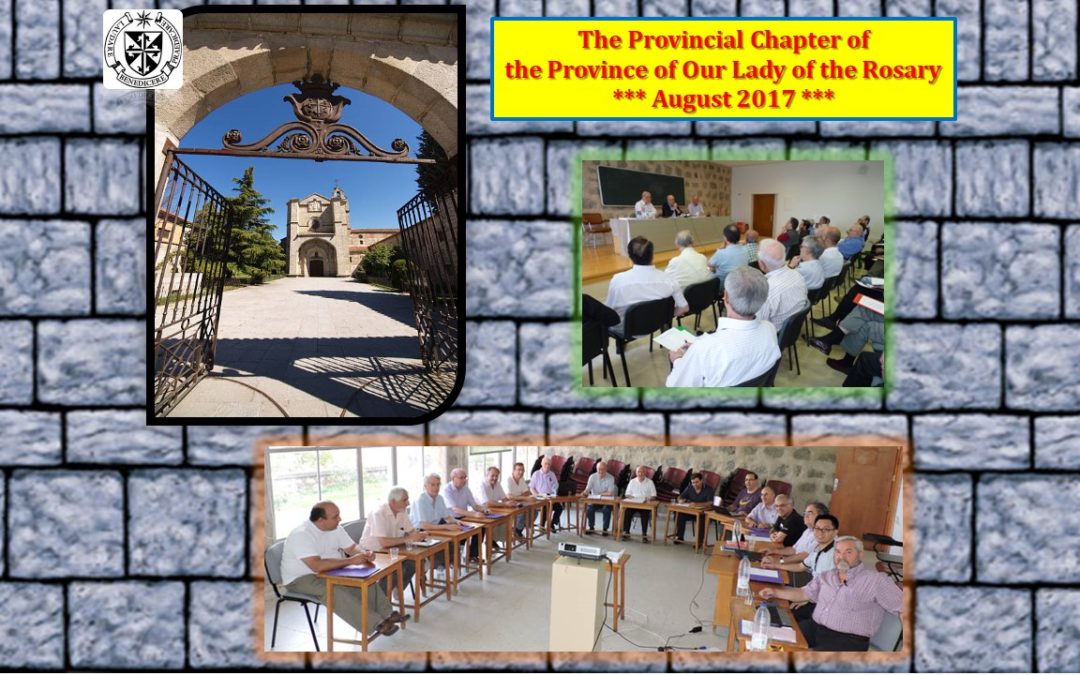
Fr. Jarvis Sy Hao
melchiorshi@gmail.com
Part I
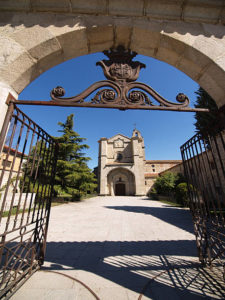
The Royal Convent of         Santo Tomas de Avila
From 1 to 19 August, 2017, the historic Royal Convent of Santo Tomas de Avila will once again receive the members of the Provincial Chapter of the Province of Our Lady of the Rosary which will be celebrated in this Convent.
A total of 34 chapter members also known as Chapter Fathers will gather to pray, to discern, to reflect, to discuss various topics related to the life of the Province and to seek direction and principles for the forthcoming four years.
The regular celebration of the Chapters whether Conventual, Provincial or General dates back from a very long tradition within the organization and legislation of the Order of Preachers. It is an exercise of co-responsibility, affirmation and renewal thus making the charism of preaching and service to the Church ancient yet ever new and creative in accord to the times.
Since the medieval times, Religious Orders had been organized into kingdoms, nations and regions for practical purposes of organization and governance. These entities are called “Provinces†evoking the terminology used by the ancient Roman Empire.
As a mendicant order, the Dominicans were divided into Provinces during the second General Chapter of 1220 and thus a basic organizational structure and government was established before the demise of S. Dominic in 1221.
One becomes a Dominican, he is filiated to a “provinceâ€, thus he called a “son” of the Province, usually for life unless he is assigned or transferred to another province of the Order by the Master of the Order. Because the province by cultural and religious influence, has a direct link with the life and ministry of the friars who belong to it, each province has a different way of doing things, traditions and customs which enrich the Dominican life.
Dominican life is lived in a community, which are the “cells” of our religious family and as all cells for their development need interchange, to be integrated to various levels in an organism (the Province, then the whole Order, vis-a vis, the local and universal Church …).
If a community has at least six brothers, it is called a “Conventus†and it is led by a prior, elected by his confreres for a three year term which can be renewed for another term.
Living in common, is not only praying, eating, and working together. In the spirit of co-responsibility, friars share the crux of common concerns through community meetings or conventual chapters. They also elect their prior who serves as the executor of the will of the community and the person in charge in our Dominican life.
If in a community, there are less than six friars, this is called “Domusâ€, or the house (has so to say a more provisional status, serves a contingent need or has not been able to become a priory) and the brothers of this house do not elect prior, but their “House superior†is appointed by the Provincial, usually with previous dialogue with the needs of the community.
The Prior Provincial, the major superior of the Province is elected for a term of four  (4) years. The election of major superior who will serve as the executor of the plans and ideals of the Provincial community and as representative of the Province is one of the important task of the Provincial Chapter.
Provinces
The organization of the Provinces is analogically similar to the organization of the Order and thus since time immemorial, with the great spirit of distributing powers and responsibilities to the communities and to individual friars. The Provinces play a very important role in the life of the Order in contrast to other religious Orders especially after the more centrist Society of Jesus was founded after the Council of Trent.
While in many modern congregations and religious institutes, their concept of the Province would be more on the geographical or territorial division of ministry, the Province in the Order is more than that, it becomes a living space to live the charism of the Order and thus there is a great spiritual affinity among the brethren in each Province. Moreover, each Province possesses a complete organization under the supervision of the Master of the Order and the General Curia; it also contains the legal and spiritual machinery to perpetuate its existence and guarantee the discharge of ministries entrusted.
The first provinces of the Order reflect the diverse presences and the wonderful expansion of the friars: Spain, Provence, France, Lombardy, Rome, Germany, Hungary and England. Eight hundred years later, while some Provinces had been suppressed by time and circumstance, merged with other entities or relegated into simpler entities, new ones too are being organized across the globe. Today, there are 84 “juridical presences†of Provinces, Vice Provinces and General Vicariates.
In the long list of the Dominican Provinces, number 25 is the Province of Our Lady of the Rosary, founded in 1587 “for the evangelization of China and its neighbouring kingdomsâ€. It is the only missionary Province of the Order and throughout its glorious history had contributed greatly in the evangelization of peoples and had produced a great number of martyrs for the Order and for the Church.
From the XVI century till the XX century it was the only Dominican entity in the Far East and had assumed diverse ministries and mission work in the region. She also founded various entities of the Order: Province of Queen of Martyrs of Viet nam (1967), Province of the Philippines (1971) and the Vice Province of Queen of China (Taiwan) (1978)
While maintaining the traditional ministries and missions of the Province in the Far East, the Province since the beginning of the XXI century had been blessed with new vocations and new foundations. Despite the challenge of aging and missions in need of renewal and new blood, new challenges in recruitment, formation, new presences and new realities seem to pump in much needed adrenaline to the ancient and still energetic “old Ladyâ€â€”the Province.
The chapter of 2017 is pivotal as the Order after the euphoria of the Eighth centenary had left a common desire among the brethren for renewal and to reaffirm our commitment for evangelization. How the province will respond to these challenges and new directions will be dependent on the foresight and leadership of the new team to be led by the new Prior Provincial.
Part II
The provincial chapter is made up of representatives of all the friars of the province. Since the outset of the convents were elected by their brethren – and were not named but only confirmed the higher authority – they represent them fully. In addition, each priory, to ensure adequate representation to so-called base, shall elect a member who will accompany the prior in his capacity as “sociusâ€, and shall enjoy the same rights as those who attend by virtue of their office. For large communities, the members of the conventual chapter may elect more than one socius.
As of 2016, our Province of Our Lady of the Rosary has a total of eight (8) priories: Four (4) in Asia, Two (3) in Spain and one (1) in the Philippines.
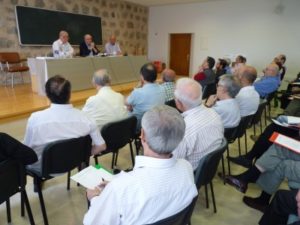
The meeting at the previous provincial Chapter
The brothers who are assigned to Domus or Houses are then organized into clusters so called electoral colleges consisting of 8-10 members where they elect one of the members as their delegate for the Provincial Chapter.
In our province, there are a total of XII electoral colleges.  They can be broken down as follows: 6 electoral colleges in Asia; 3 electoral colleges in Europe and three (3) electoral colleges from South America. In Asia, except for the I-II electoral colleges wherein the cluster is mixed from diverse regions or missions, the brethren working in the “frontiers†like Taiwan, South Korea, Union of Myanmar and Mainland China are assured of being represented.
Note here that in contrast with other Provinces, the Province of Our Lady of the Rosary has few convents and many Houses. This is due to the fact that many presences are made up of small communities and thus a good number of chapter fathers would be from the ranks of the electoral colleges.
Thus, between priories, their priors and socii, and delegates we arrived at a score of thirty (30) capitulars, they directly express diversity of cultures, realities and ministries of the Province around the world. With this number we ought to add the Prior Provincial who ends his terms on the Chapter; and the three Regional Priors of the Province (Vicariate of the Philippines, Japan and Venezuela). Thus arriving to the number of 34 members/electors.
It should also be noted that despite the fact that there are still a good number of Spanish friars in the Chapter, the number of non-Spaniards had increased since the last Provincial Chapters: and well represented as we shall have not only Spanish friars but also Chinese, Korean, Burmese and Venezuelan Chapter Fathers, perhaps one of the most diverse in the four hundred year history of the Province!
The principal task of the Provincial Chapter is to elect the Prior Provincial. He is the major superior of the Province and executes the plans and the directives of the Chapter in the coming four years.
After the election of the Prior Provincial, there will also be the election of those who will be part of the the executive team for the next four years: first, the diffinitors (six in number) which together with the Prior Provincial have the task of translating into directives, the guidelines and decisions of the Chapter and to appoint the officers of the province. After the chapter, the diffinitors shall serve as Provincial Councillors.
The Diffinitors as well as other councilors shall then form the advisory council that will help the prior provincial in his government during the next four years. From these pool of friars, the Prior Provincial shall then chose his socius (i.e. the friar chosen by him as a collaborator)
Among them would be the Provincial Syndic or Bursar and his assistants; the friars in charge of the various stages of formation and the different promoters within the Province; and all those to whom it is judged necessary to entrust a service to implement the decisions of the provincial chapter and promote the life and mission of the province.
In the same time, the Regent of Studies, the friar in charge of promoting the intellectual life and coordination of studies in the province will be appointed. Given the importance that traditionally the study of our Order, the regent is appointed by the chapter, but his name is proposed to the Master of the Order which is responsible for its creation.
Finally, it is responsibility of the provincial chapter to elect representatives to the general chapters of the Order, which are held every three years, alternately between provincial chapters and chapters of definition.
Part III
Evidently the provincial chapter is not limited to elect people but especially looks to the future by assessing the present and developing projects.
There are two important aspects of a Dominican Chapter whether it is a Provincial or a General Chapter.
It is a celebration of our Dominican mission and our ministries. Within the framework of prayer and common practice of discernment, the friars not only pray, celebrate but also reflect and discern the signs of the times and their response to the needs in accordance to their charism.
It is also a moment of discernment, especially when there arises moments of re-structuring, of opening new missions and closing old ministries and presence.
It is a moment of auto-criticism as brothers re- examine the oft talked about term of “quality of life†and how to tackle the challenges faced by the Province as a collective group. This is manifested through the work and reflection of various commissions of the Chapter, under various topics and themes for reflection.
The results of these reflections are found in the working document to be presented to the assembly and the various ordinations and recommendations to the friars.
The chapter in turn, incorporated this material will work for commissions on these topics and then present to all the province the guidelines for the coming years, giving concrete indications because in each of these areas the provincial community can realistically grow and mature, in short, to better enjoy his vocation.
In practice, the chapter establishes the provincial policy and reiterates or recreates its so called “mission-visionâ€.
It also legislates by determining or modifying the Provincial Statutes, either adding new rules or revising the rules in accordance to the latest decisions of the General Chapter or the new version of the Constitutions or directives from the General Curia.
It is also the responsibility of the provincial chapter to order the life and ministry of the Province for the coming four years; planning and coordinating the various ministries, whether collectively or individually.
It is also a moment of gratitude and memory: the Chapter is also a moment to relive the various events of the past four years, to be grateful to the Lord and at the same time to make memory of them, especially the deceased brothers. Thus part of the the Acts of the Chapter is the record of important events since the last Chapter and the necrology of the Province.
The Acts of the Provincial Chapter (and even more so those of the General Chapters) are at the service of the zeal and the apostolic creativity of the brethren; it tries to promote the apostolic “consensus†to that it may be able to work and live “in one heart and mind in God’s serviceâ€.
In the light of the forthcoming Provincial Chapter, it would be good for us to recall the spirit and the ideals laid down during the recent General Chapter of Bologna (2016) which coincided with the Jubilee of the Order:
our lives to follow Christ after the example of St. Dominic it is a life of contemplation of God’s Word and apostolic fraternity, which occurs in every community with its gifts and its weaknesses. This fraternity is rooted in obedience to the apostolic mandate and community in the implementation of this mission whose first condition is the sharing of our expectations, charisms, personal skills and material goods (205).
This apostolic fraternity is done with the community project (206) which is a good way to operate solidarity and dialogue, to facilitate the exercise of authority and obedience of the of the upper… (207)
Ultimately the Provincial Chapter is an instrument at the service of communities and friars so that they can more and better to grow in charity and be bearers of the Gospel to the world joy, the awareness of being alive and well connected parts of the Order and the Church.

The members of the previous provincial Chapter



